Venation, Water Transport and Photosynthetic Rate
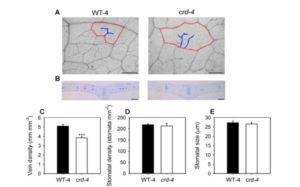 Land plants lose vast quantities of water to the atmosphere during photosynthetic gas exchange. To supply this high demand for water an internal transport system comprised of xylem conduits irrigates the leaf. Selection for greater rates of photosynthesis and increased productivity is believed to have been the primary driver behind the >10 fold increase in vein density that is observed in the fossil record over the past 400 million years, from the single-veined leaves of lycophytes to the highly complex, hierarchical networks of leaf veins in angiosperms. In angiosperms a complex network of veins irrigates the leaf, and it is widely held that the density and placement of these veins determines maximum leaf hydraulic capacity and thus maximum photosynthetic rate. This theory is largely based on interspecific comparisons and has never been tested using vein mutants to examine the specific impact of leaf vein morphology on plant water relations. To fill this gap, McAdam et al. () have characterized mutations at the Crispoid (Crd) locus of pea (Pisum sativum) that produce reduced leaf vein densities and aberrant placements of free-ending veinlets. The altered vein phenotype in crd mutant plants is not associated with changes in stomatal density or stomatal size, but leads to a significant reduction in leaf hydraulic conductance and gas exchange. Current theory indicates that the terminal path-length for water flow through the mesophyll should govern maximum leaf hydraulic conductance, stomatal conductance and thus maximum photosynthetic rates. Based on their analyses, the authors conclude that increases in the density of leaf veins coupled with their efficient placement can drive increases in leaf photosynthetic capacity. Since the authors show that Crd corresponds to the PsYUC1 gene, a member of the YUCCA gene family known to encode key auxin biosynthesis enzymes, it appears that auxin, through its effects on leaf venation, acts as a regulator of both maximum leaf hydraulic supply and maximum photosynthesis, and likely whole plant productivity.
Land plants lose vast quantities of water to the atmosphere during photosynthetic gas exchange. To supply this high demand for water an internal transport system comprised of xylem conduits irrigates the leaf. Selection for greater rates of photosynthesis and increased productivity is believed to have been the primary driver behind the >10 fold increase in vein density that is observed in the fossil record over the past 400 million years, from the single-veined leaves of lycophytes to the highly complex, hierarchical networks of leaf veins in angiosperms. In angiosperms a complex network of veins irrigates the leaf, and it is widely held that the density and placement of these veins determines maximum leaf hydraulic capacity and thus maximum photosynthetic rate. This theory is largely based on interspecific comparisons and has never been tested using vein mutants to examine the specific impact of leaf vein morphology on plant water relations. To fill this gap, McAdam et al. () have characterized mutations at the Crispoid (Crd) locus of pea (Pisum sativum) that produce reduced leaf vein densities and aberrant placements of free-ending veinlets. The altered vein phenotype in crd mutant plants is not associated with changes in stomatal density or stomatal size, but leads to a significant reduction in leaf hydraulic conductance and gas exchange. Current theory indicates that the terminal path-length for water flow through the mesophyll should govern maximum leaf hydraulic conductance, stomatal conductance and thus maximum photosynthetic rates. Based on their analyses, the authors conclude that increases in the density of leaf veins coupled with their efficient placement can drive increases in leaf photosynthetic capacity. Since the authors show that Crd corresponds to the PsYUC1 gene, a member of the YUCCA gene family known to encode key auxin biosynthesis enzymes, it appears that auxin, through its effects on leaf venation, acts as a regulator of both maximum leaf hydraulic supply and maximum photosynthesis, and likely whole plant productivity.


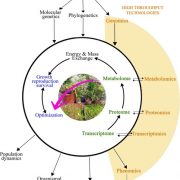
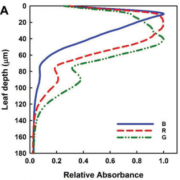
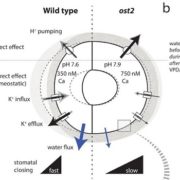
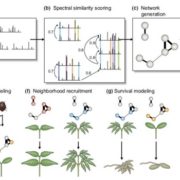
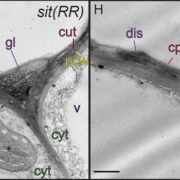



Leave a Reply
Want to join the discussion?Feel free to contribute!